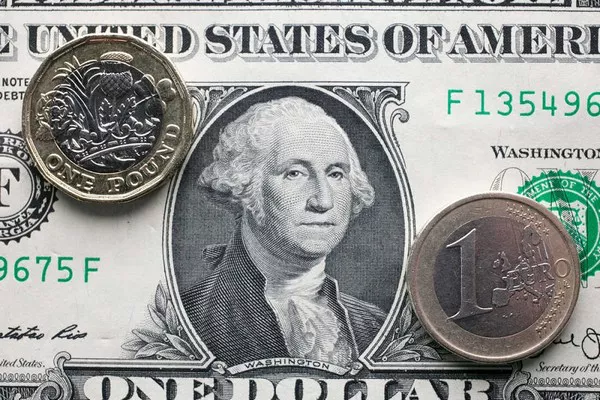The U.S. dollar edged lower on Friday, while the euro rebounded from recent losses after data revealed a moderation in inflation, fueling expectations that interest rates may have peaked, and central banks could soon contemplate rate cuts.
The dollar index, measuring the U.S. currency against six counterparts, dipped by 0.116% to 103.33, following its weakest monthly performance in a year despite a 0.6% overnight surge.
Recent data indicated moderate U.S. consumer spending in October, with the annual inflation increase being the smallest in over 2-1/2 years. The personal consumption expenditures (PCE) price index rose 3% in October from a year ago, easing from the three-month average of 3.4%, although still above the Fed’s 2% target.
Ryan Brandham, Head of Global Capital Markets, North America, at Validus Risk Management, noted, “While the 3% level remains too high to declare victory on inflation, it marks a new low for the series that will likely please the Fed and alleviate any pressure to implement further hikes.
Federal Reserve policymakers signaled a likely conclusion to interest rate hikes but left room for additional tightening if inflation progress stalls. Markets are now pricing in a 97% chance of the Fed maintaining rates in December, with a 46% chance of a rate cut in March next year.
Attention turns to comments from Fed Chair Jerome Powell on Friday, with investors closely analyzing his remarks for insights into the rate outlook.
In Europe, Eurozone inflation unexpectedly declined for the third consecutive month in November, raising expectations of early spring rate cuts despite the European Central Bank’s guidance. The euro, which dipped 0.7% on Thursday, rebounded by 0.21% to $1.0909.
Sterling was last at $1.264, up 0.14% on the day.
The Japanese yen strengthened by 0.06% to 148.09 per dollar, on track for its third straight week of gains against the dollar. Expectations of the Bank of Japan abandoning its ultra-easy monetary policy next year, coupled with a decline in U.S. yields, supported the yen.
Former top Japanese finance ministry bureaucrat Toshiro Muto suggested a high likelihood of the Bank of Japan abandoning negative interest rates and yield control as early as April.
The Australian dollar rose by 0.06% to $0.661, while the New Zealand dollar increased by 0.13% to $0.616.
Data revealing weak factory activity in Asia in November, attributed to soft global demand, added uncertainty to the region’s fragile recovery, with mixed signals on China’s economic strength further clouding the outlook.


